Digital Camera World Verdict
Sigma's first RF lens has finally arrived on Canon's mirrorless platform – and the Sigma 18-50mm f/2.8 DC DN | C has been worth the wait for those using APS-C bodies like the R7, R10, R50 and R100. This pocket-sized powerhouse is an impressive performer – though as with the existing E-mount version, there is a heavy reliance on in-camera correction. With its constant f/2.8 aperture, ninja-like focus and weather sealing, this 29-80mm equivalent zoom virtually gives APS-C shooters a standard trinity lens – one that's about the size of a small tin of soda. This is a must-have for APS-C EOS R users.
Pros
- +
Constant f/2.8 aperture
- +
Extremely compact size
- +
Great center sharpness
- +
Weather sealed
Cons
- -
No image stabilization
- -
Middling edge sharpness
- -
Moderate fringing
- -
Relies on camera correction
Why you can trust Digital Camera World
The Sigma 18-50mm f/2.8 DC DN | C (for Contemporary) is, first and foremost, Sigma's debut lens for the Canon RF mount. Without going into all the politics, I've waited six years for my first RF Sigma lens and the wait has been worth it – provided you're an APS-C user.
That's because the Sigma 18-50mm f/2.8 DC DN | C is specifically an RF-S lens. Which means that, while you can use it on full-frame EOS R cameras in crop mode, it has been designed for APS-C bodies like the Canon EOS R7, R10, R50 and R100.
With an equivalent focal length of 28-80mm, weather sealing and a constant f/2.8 aperture, this is essentially a standard trinity lens for Canon's APS-C cameras – and thanks to Sigma's incredible engineering, it's barely bigger than one of those tiny cans of soda you get for mixing cocktails.
All this does come with some optical compromises, though whether you'll really notice them is another matter. Let's take a closer look…
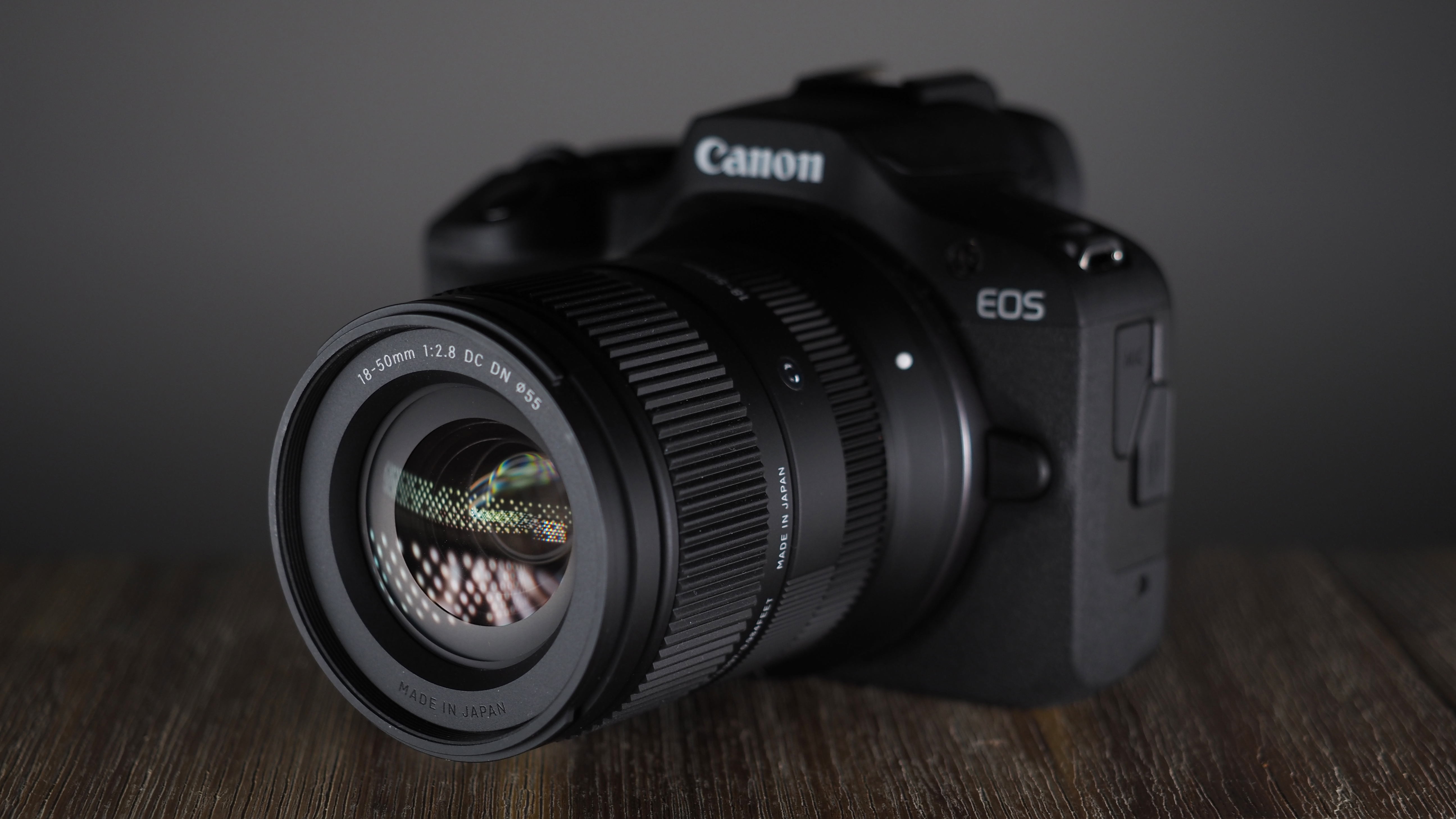
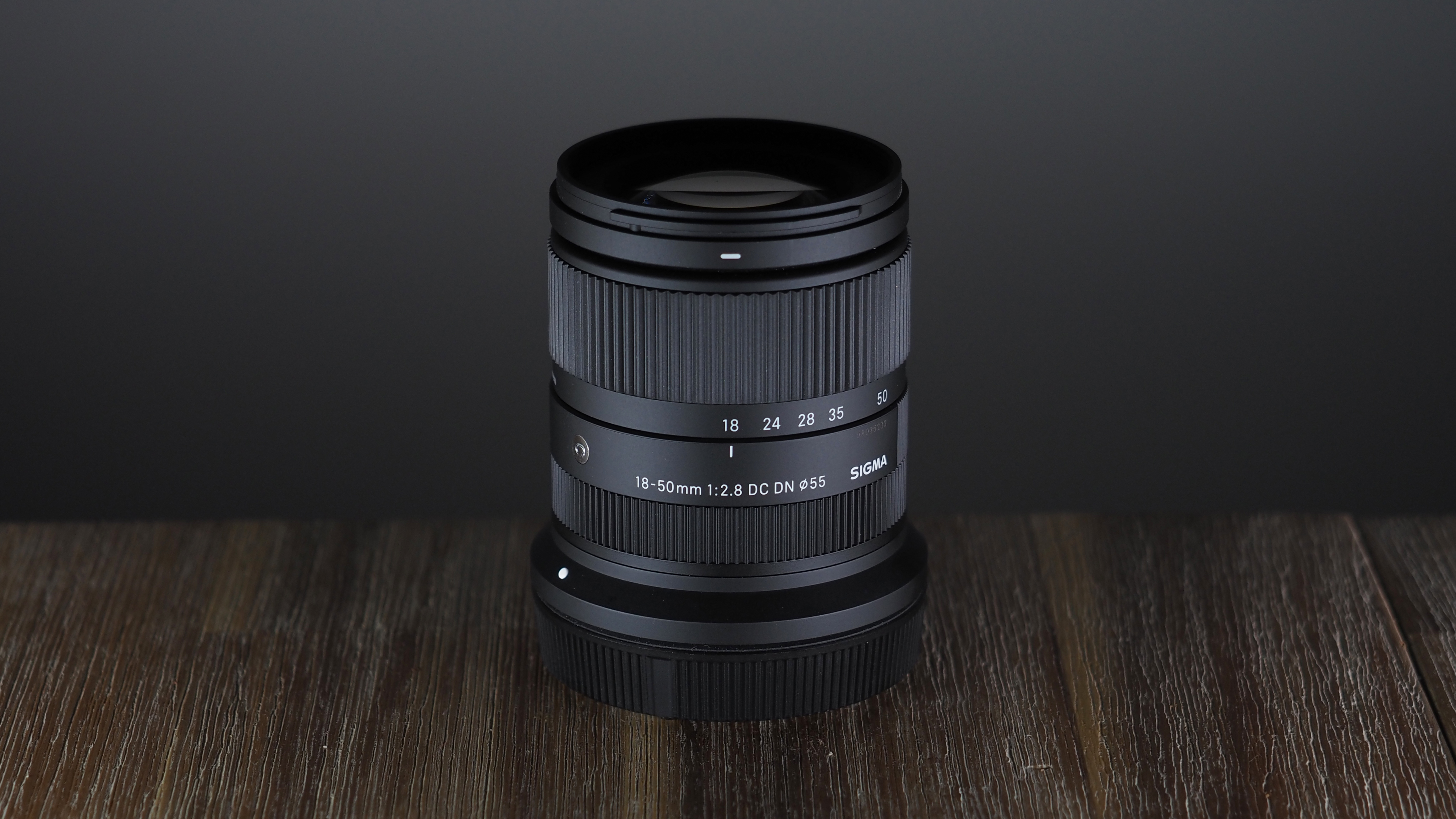
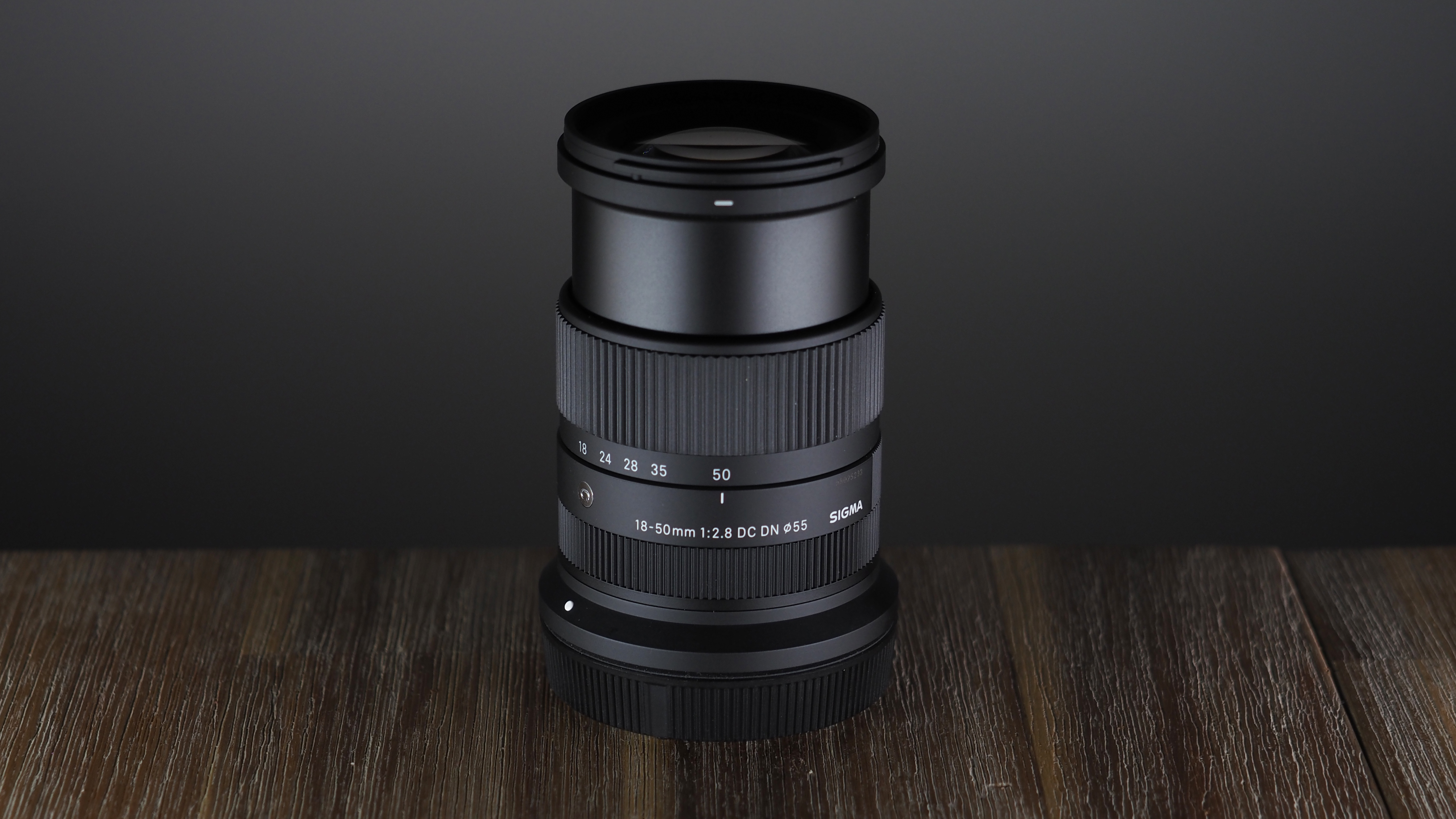
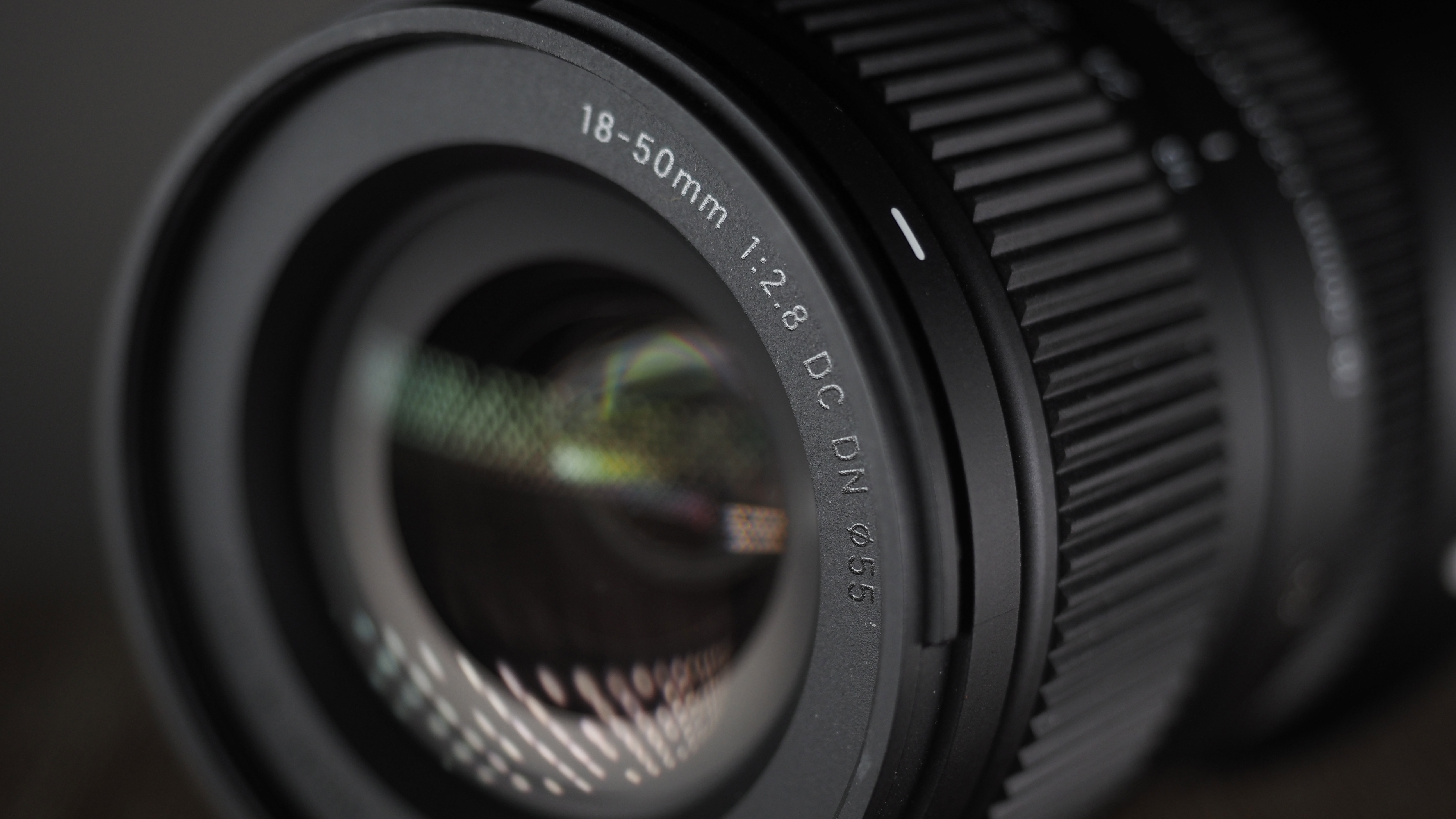
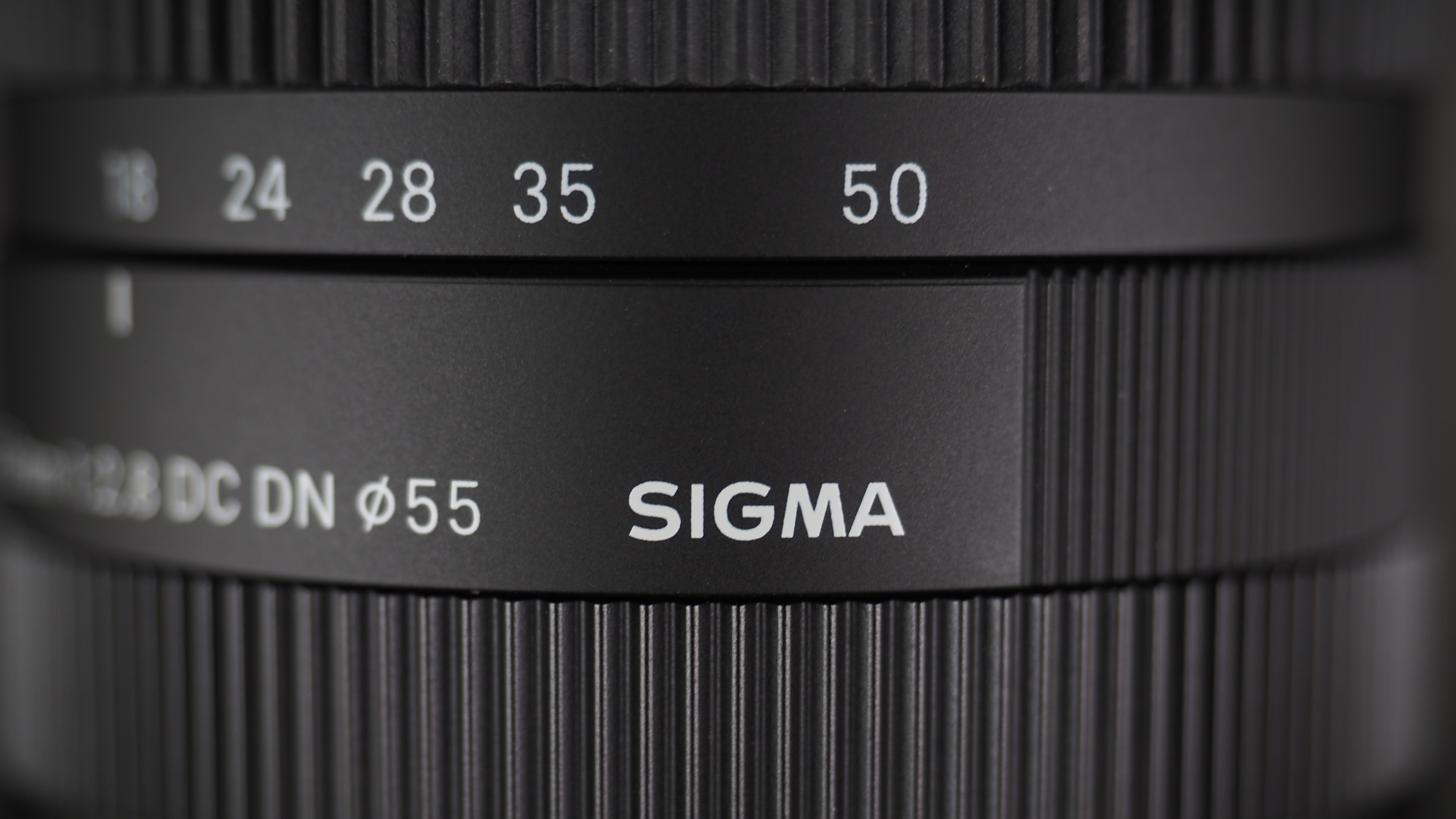
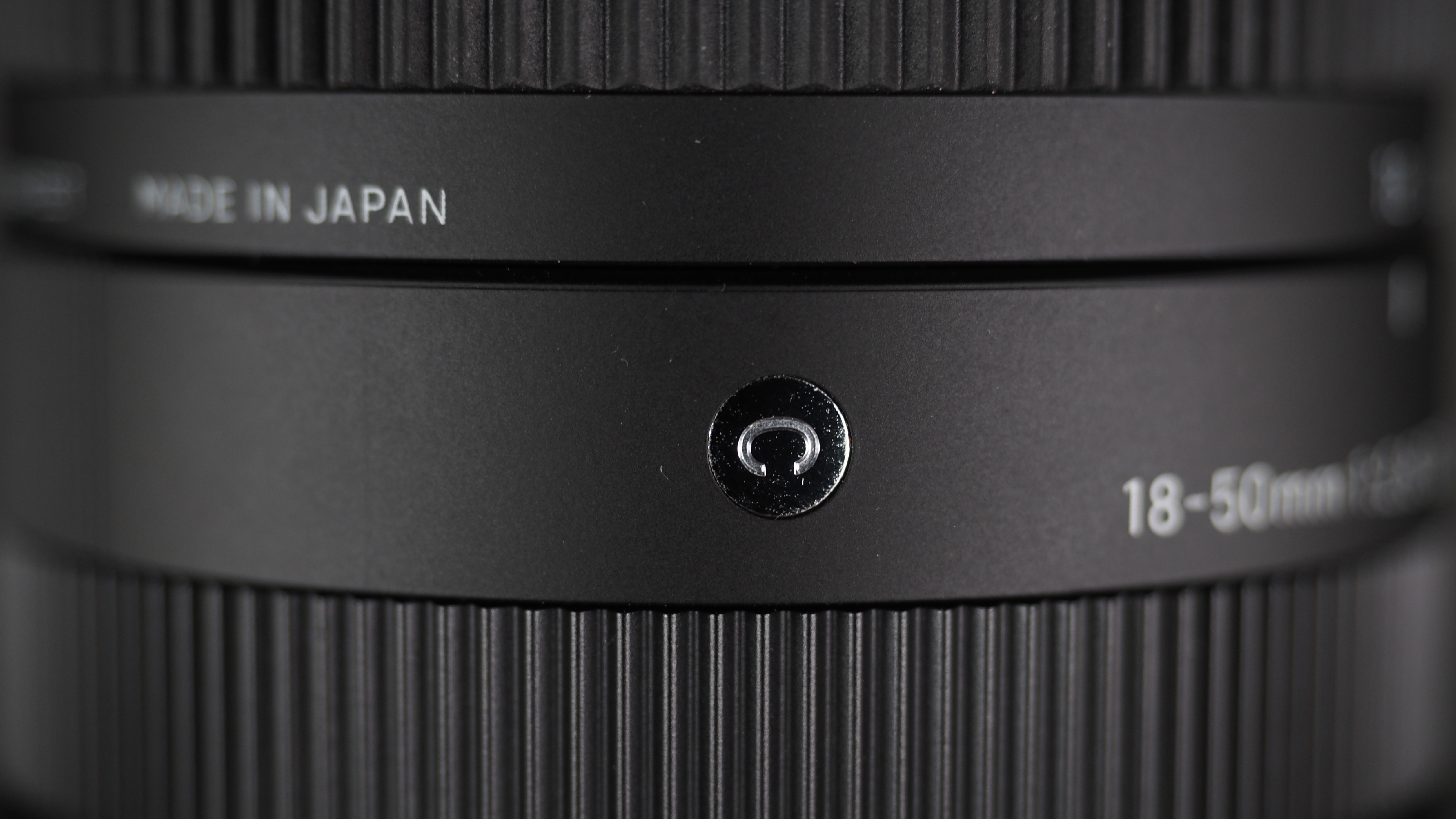
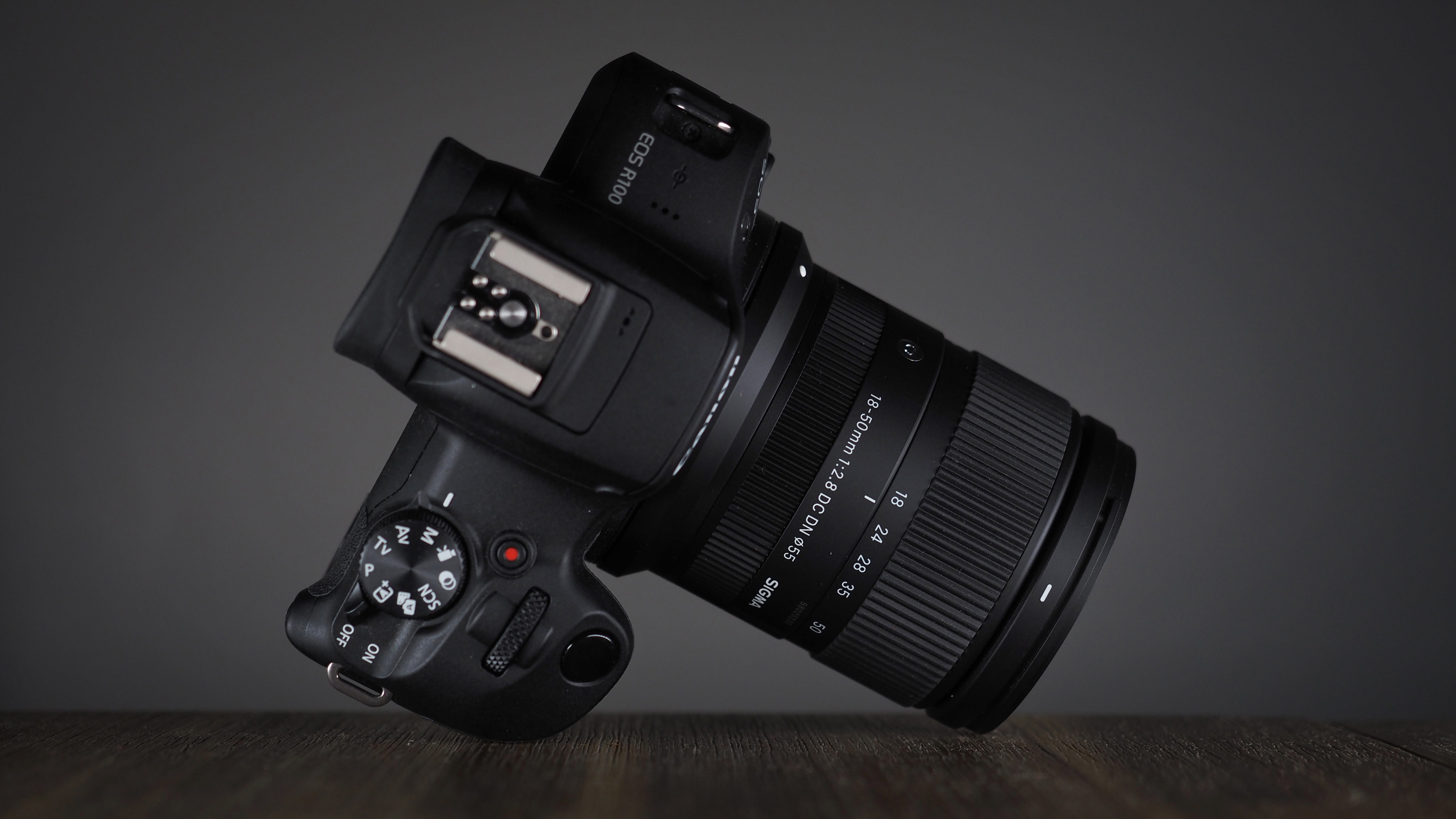

Sigma 18-50mm f/2.8 DC DN | C: Specifications
| Mount options | Canon RF-S (also available for Sony E, Fujifilm X and L-Mount) |
| 35mm equivalent focal length | 28.8-80mm |
| Image stabilization | No |
| Weather sealing | Yes |
| Focus | Auto, manual |
| Control ring | Yes |
| Lens construction | 13 elements in 10 groups |
| Aperture blades | 7 |
| Angle of view | 73.4 - 30.0° |
| Minimum aperture | f/22 |
| Minimum focus distance | 121 - 30m |
| Maximum magnification | 1:2.8 - 1:5 |
| Filter size | 55mm |
| Dimensions (len x dia) | 69.2 x 74.5mm |
| Weight | 300g |

Sigma 18-50mm f/2.8 DC DN | C: Price & Availability
Announced on April 23 2024, the Sigma 18-50mm f/2.8 DC DN | C goes on sale July 11, priced at £479 in the UK (US and Australian pricing to follow).
It doesn't have any direct competitors, with the closest alternative being the Canon RF-S 18-45mm f/4.5-6.3 IS STM – typically sold as a kit lens with APS-C RF bodies, and selling for a much lower price of $299 / £339 / AU$299. The two lenses offer similar focal lengths, but otherwise very different propositions; Canon's is much smaller and is stablized, but offers a much slower f4.5-6.3 aperture, while Sigma's is faster, has a faster and constant aperture, and is weather-sealed.
Sigma's lens feels appropriately priced, even without a benchmark to compare it to, as you're effectively getting a trinity lens for under 500 bucks.

Sigma 18-50mm f/2.8 DC DN | C: Design & Handling
The Sigma 18-50mm fits perfectly in the palm, and pairs beautifully with Canon's smaller APS-C bodies – particularly the compact EOS R50 and R100, but also with the larger R7 and R10.
Bear in mind that, while this lens is weather-sealed, the R7 is the only one of the above cameras that also possesses sealing (so you are not protected from the weather if you use it with any other RF-S body).
This is an incredibly small and lightweight lens, at just 69.2 x 74.5mm and 300g (making it slightly larger than the E mount version we reviewed in 2022). Out of interest, since it's the closest comparable RF-S optic, here's the Sigma 18-55mm next to the Canon RF-S 18-45mm.


As you can see, in its collapsed form, the Canon is about half the size of the Sigma, but it cannot shoot until you extend it into shooting mode – whereupon it becomes the same size (though the Sigma does extend further when you zoom).
The lens has an external zoom mechanism that telescopes out about an extra third as you zoom towards 50mm. Even so, it remains small and well-balanced at all times. For my fingers, the zoom ring has the perfect amount of throw for a barrel this compact, enabling seamless coast-to-coast racking.
Likewise, the focus ring offers "just right" tactility for manual focusing – though it should be noted that, with such a streamlined design, there is no physical switch to flick between AF and MF.

Sigma 18-50mm f/2.8 DC DN | C: Performance
I tested the Sigma 18-55mm on both a full-frame Canon EOS R5 (in crop mode) and a Canon EOS R100. Obviously the latter is the sort of camera that the lens was designed to be used with, but I was curious about how it would perform in crop mode on a full frame camera.
This is such a fascinating and fun lens to use. Fascinating because, as I've mentioned, it's a powerhouse akin to a 24-70mm trinity. And fun because, instead of being heavy and enormous (and expensive) like a 24-70mm trinity, it's feather-light and supremely small – taking what is usually an unwieldy workhorse for professional jobs and making it one of the best street photography lenses I've ever used!
It could serve any number of other purposes, of course. The focal length and fast aperture make it perfect for things like sports, wildlife and weddings. But I had an absolute blast, pounding the pavement and snapping shots to my heart's content. Having a lens this powerful and portable is such a game-changer for reportage.
While the R5 has a far more advanced AF system, I found this lens an absolute dream for autofocusing on the R100 as well. It's so quick to acquire focus and it keeps right up with the action, even on erratic subjects like bumblebees and moving people. The AF is ninja-quiet, too, and incredibly smooth, so this would be a great lens for shooting video.


When shooting wide open, the Sigma 18-55mm renders really pleasing bokeh. You're not going to get the same shallow depth of field on an APS-C sensor, but the aperture enables you to create subject separation and there's a lovely quality to the defocused areas.
This lens is also super-sharp in the center when shooting wide open, which is exactly what you want of a constant f/2.8 lens. Our lab results (see below) revealed the corners to be far less impressive, though in real-world shooting I can't say that I really noticed it.
What I definitely did notice, though, was the distortion. As was the case with the Sony E mount version of this lens, barrel distortion is enormous at the wide end with less obnoxious pincushioning as you go long.
It should be noted that this is all corrected in-camera for JPEG shooting, but you'll obviously see it if you work with RAW files (though it's only a few clicks to correct in post-production). I personally don't mind lenses that rely on camera correction, but I know some purists feel betrayed by a lens if it's not achieved optically.
Sigma 18-50mm f/2.8 DC DN | C: Sample images

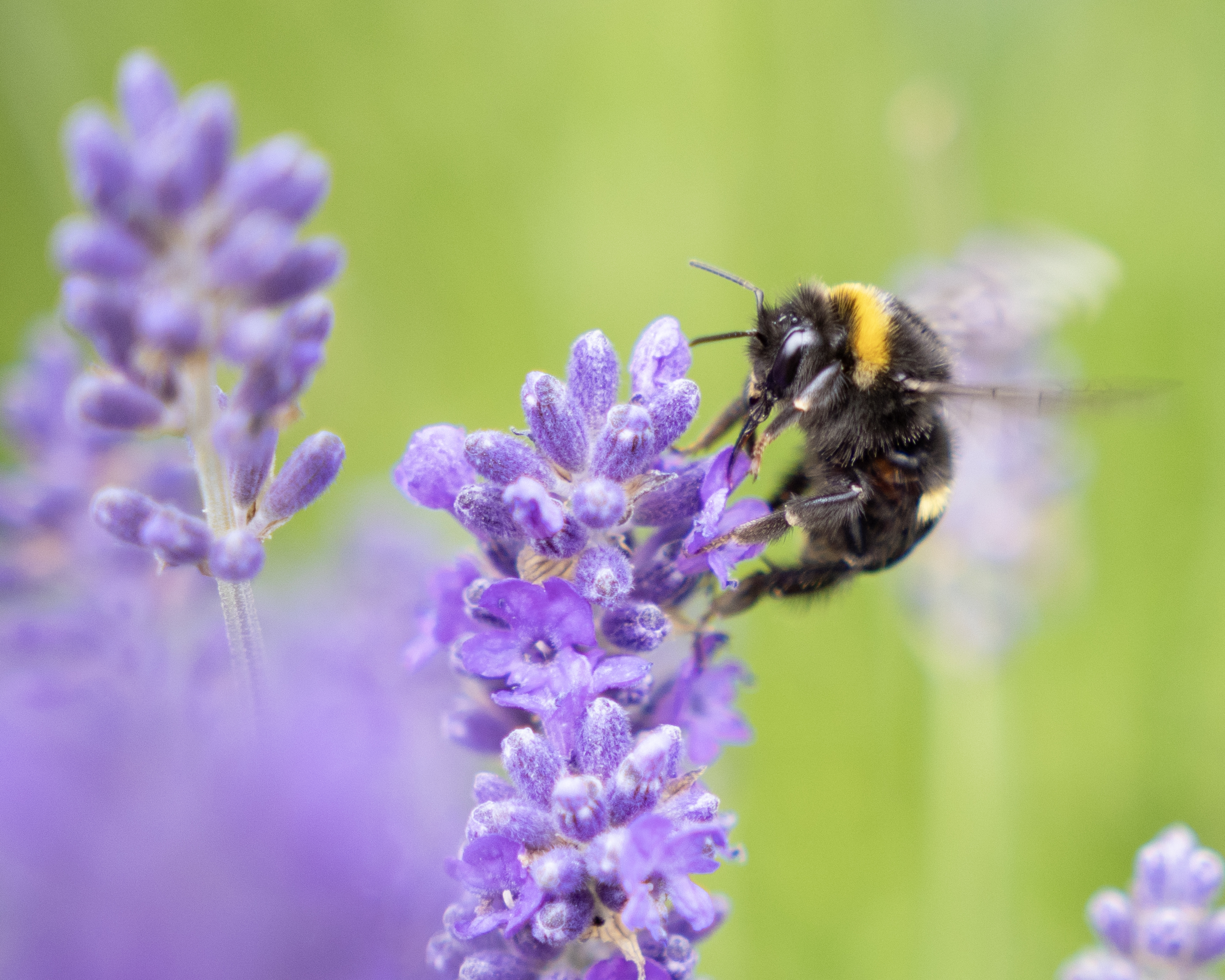
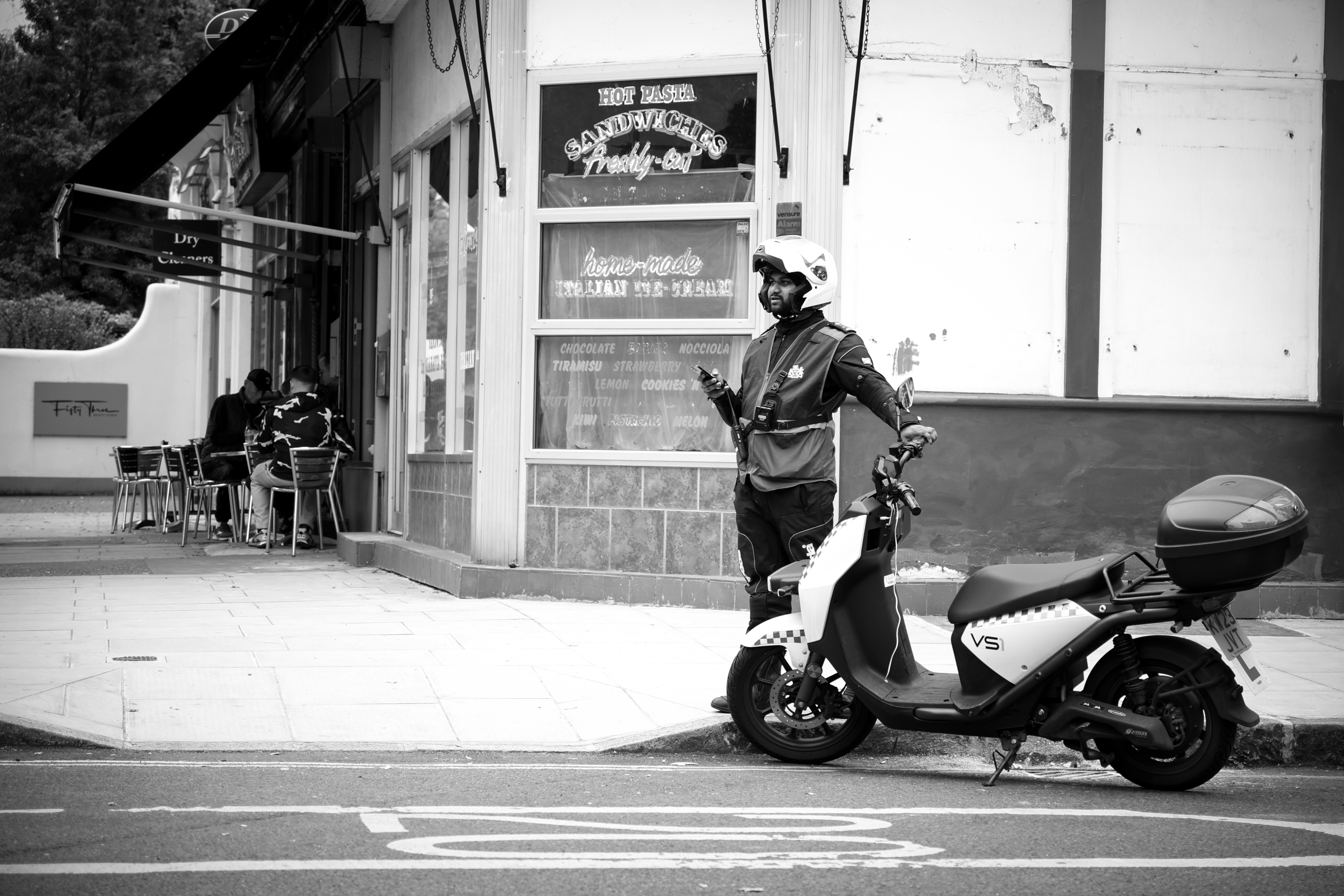

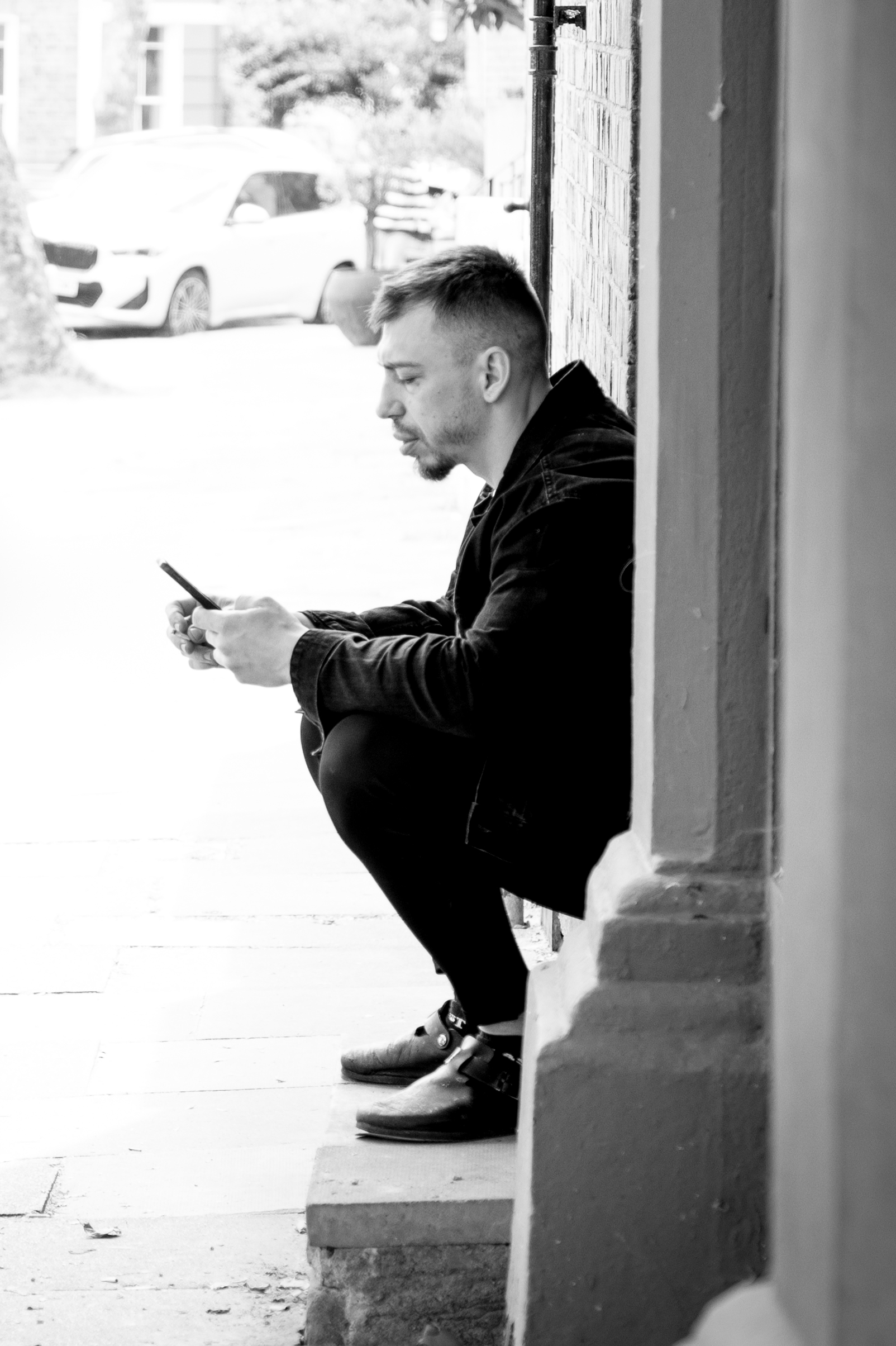




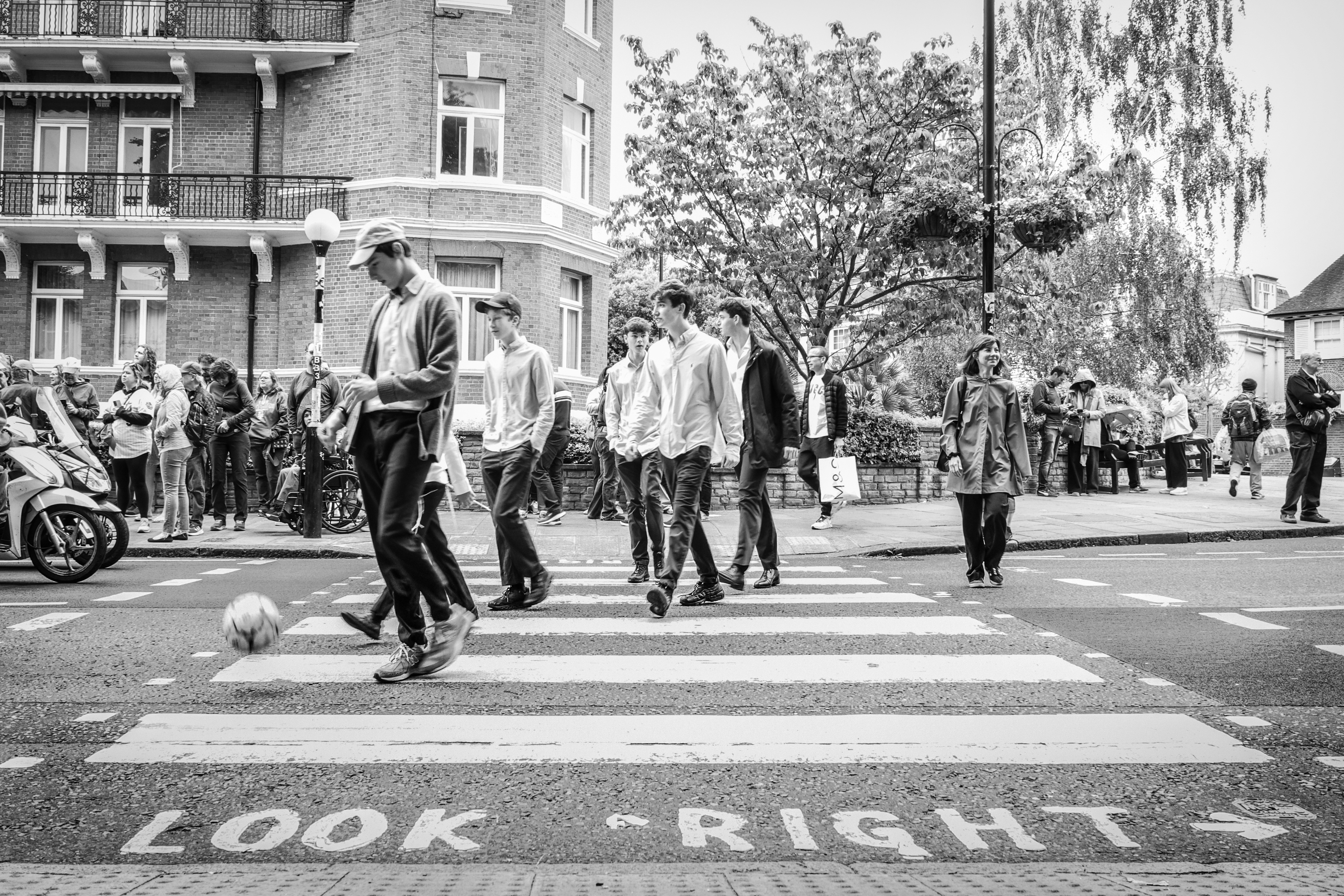
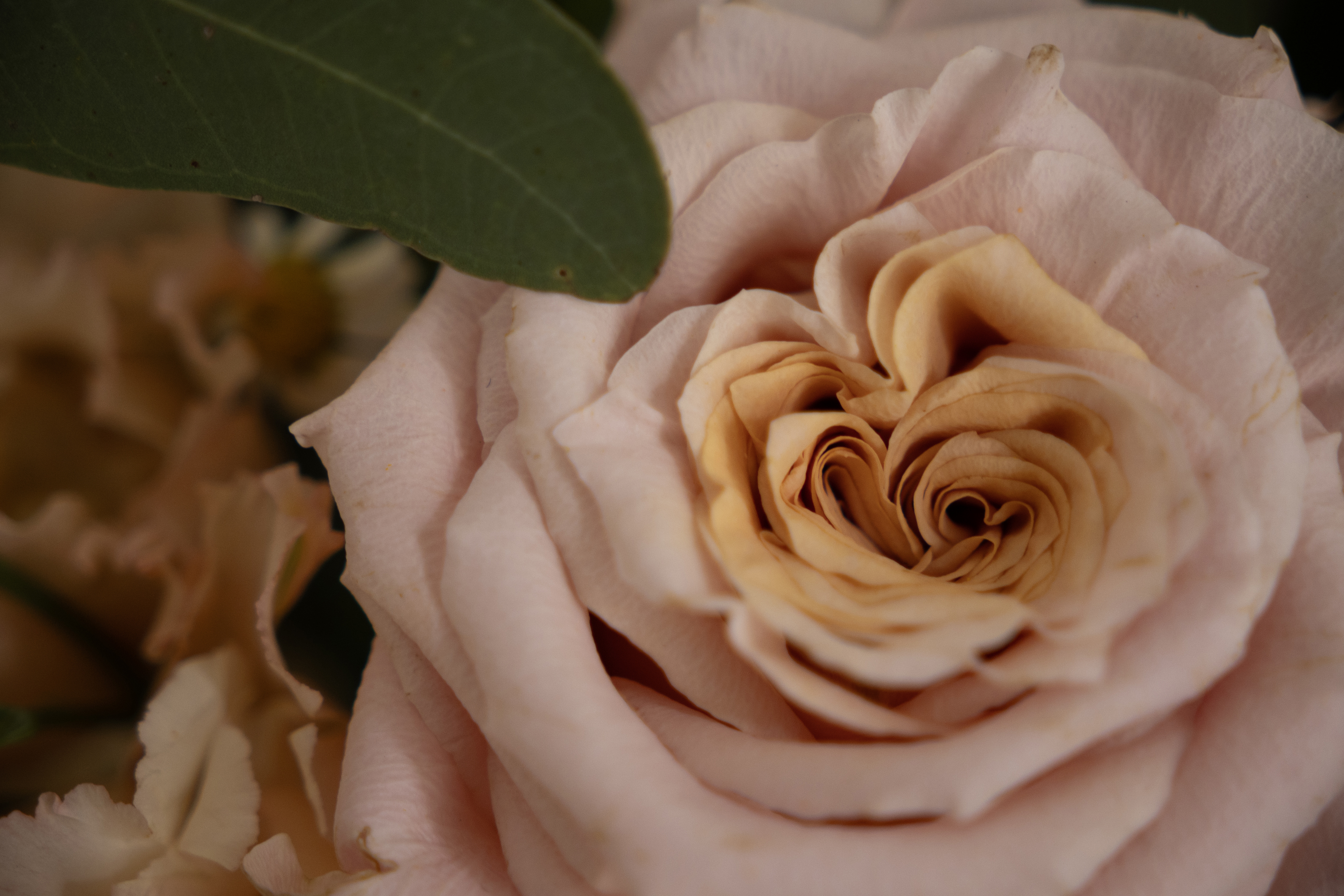

Sigma 18-50mm f/2.8 DC DN | C: Lab Data
We run a range of lab tests under controlled conditions, using the Imatest Master testing suite. Photos of test charts are taken across the range of apertures and zooms (where available), then analyzed for sharpness, distortion and chromatic aberrations.
We use Imatest SFR (spatial frequency response) charts and analysis software to plot lens resolution at the center of the image frame, corners and mid-point distances, across the range of aperture settings and, with zoom lenses, at four different focal lengths. The tests also measure distortion and color fringing (chromatic aberration).
Sharpness:
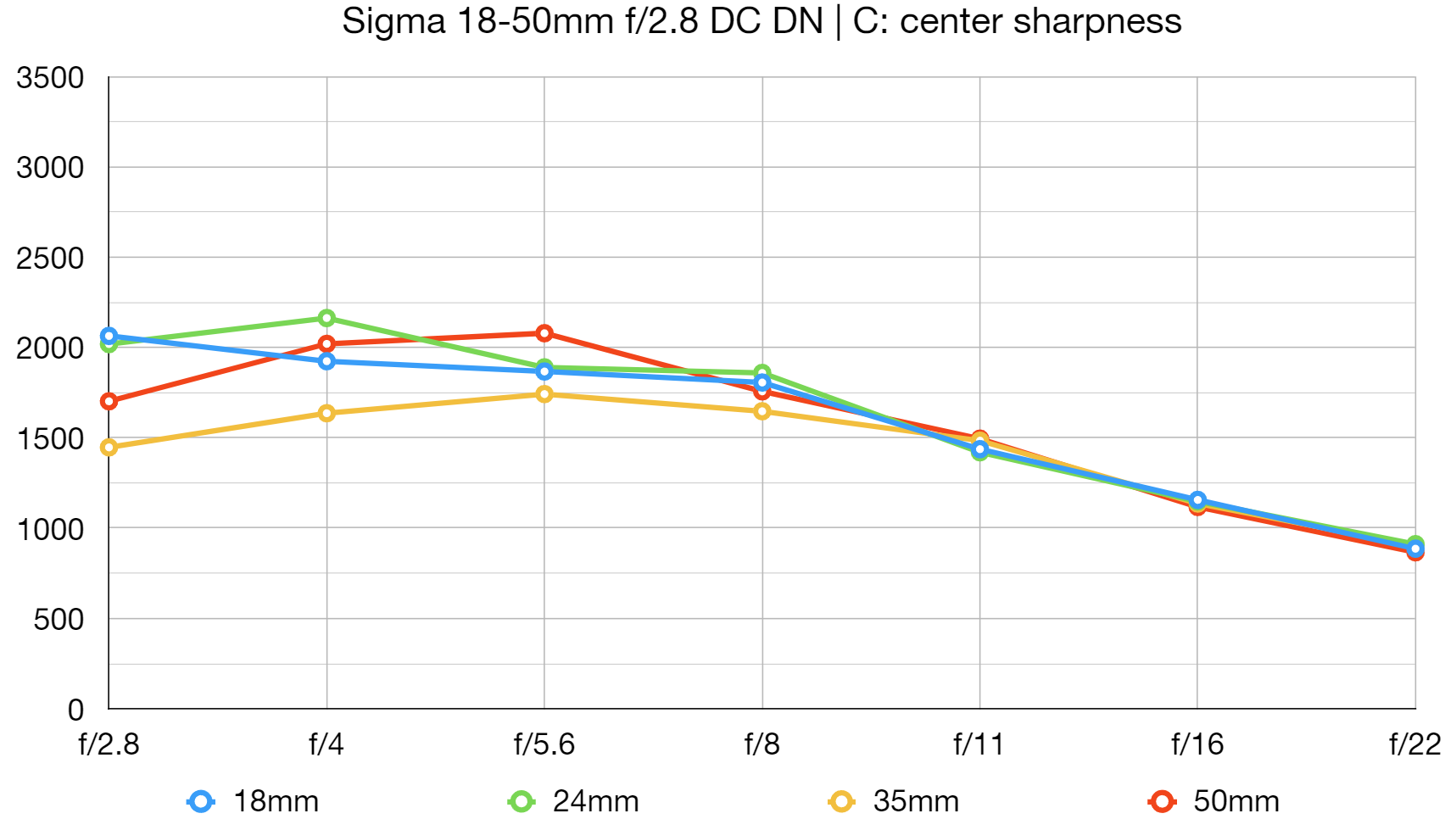
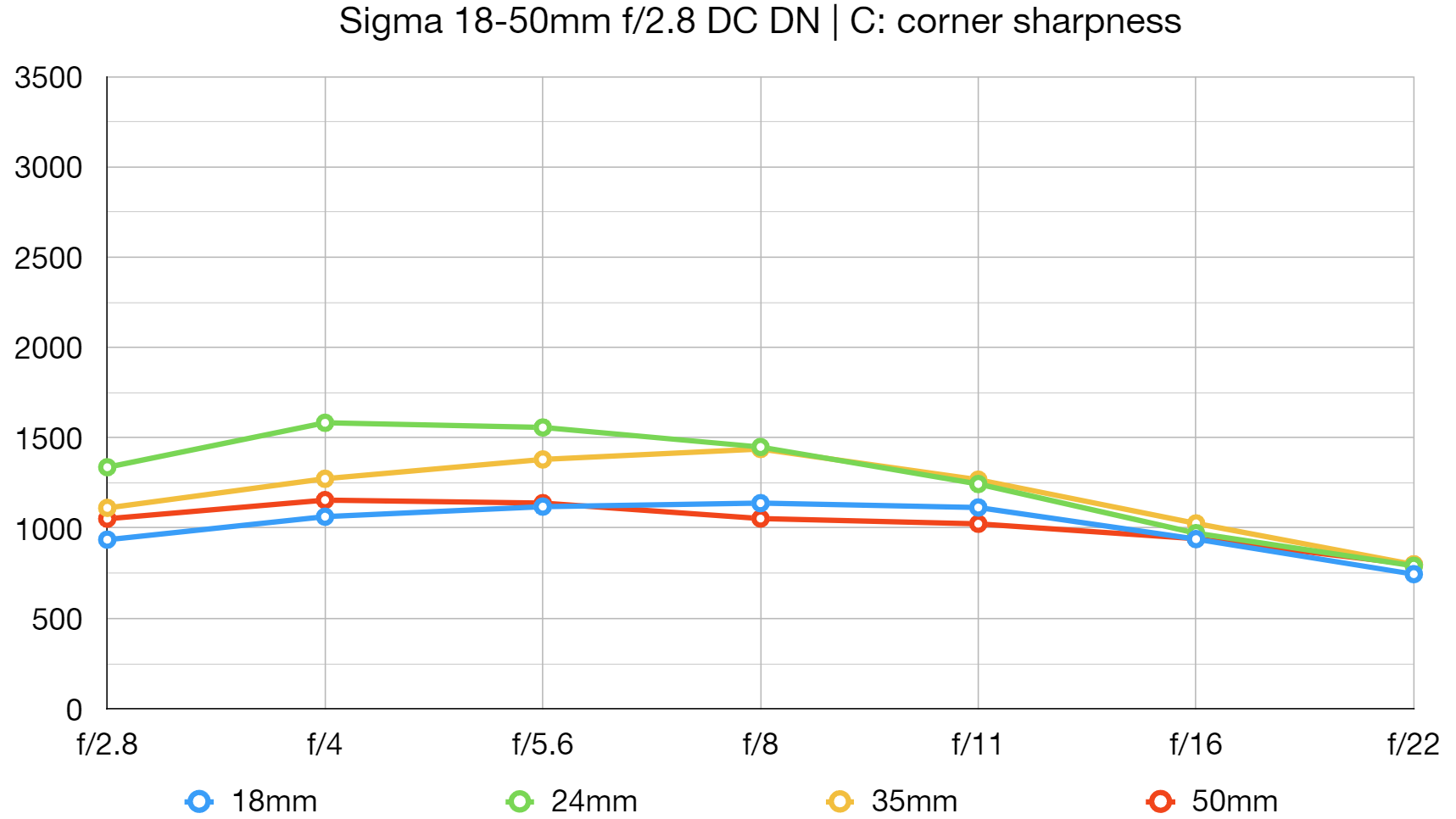
Center sharpness is excellent, even wide open at f/2.8, though it takes a slight dip at 35mm. Corner sharpness is inevitably lower, especially at each end of the lens's focal range where it's distinctly average at all apertures.
Fringing:
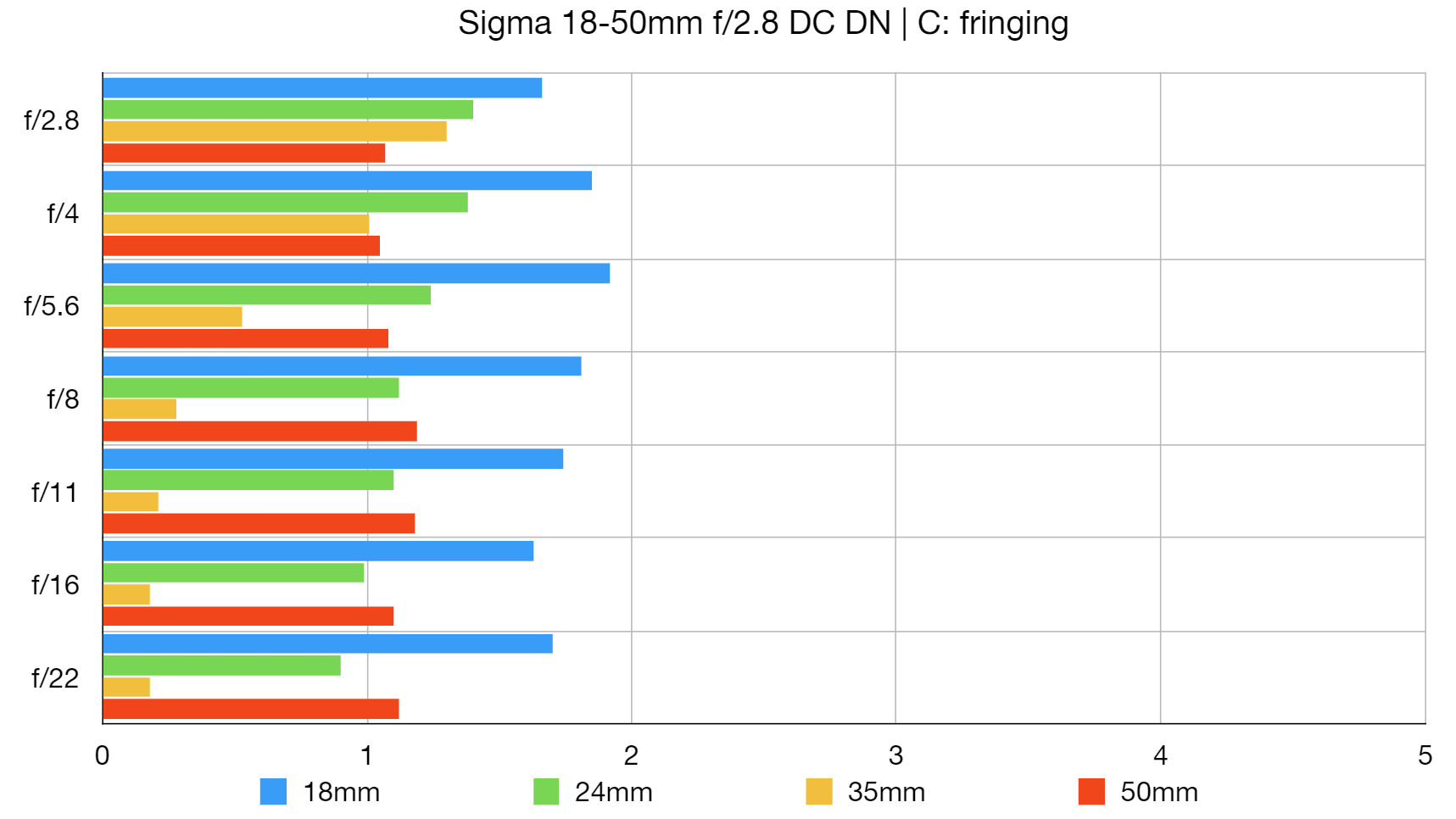
Color fringing is noticeable at middling focal lengths, and most obviously so at 18mm, though it never becomes severe.
Distortion:
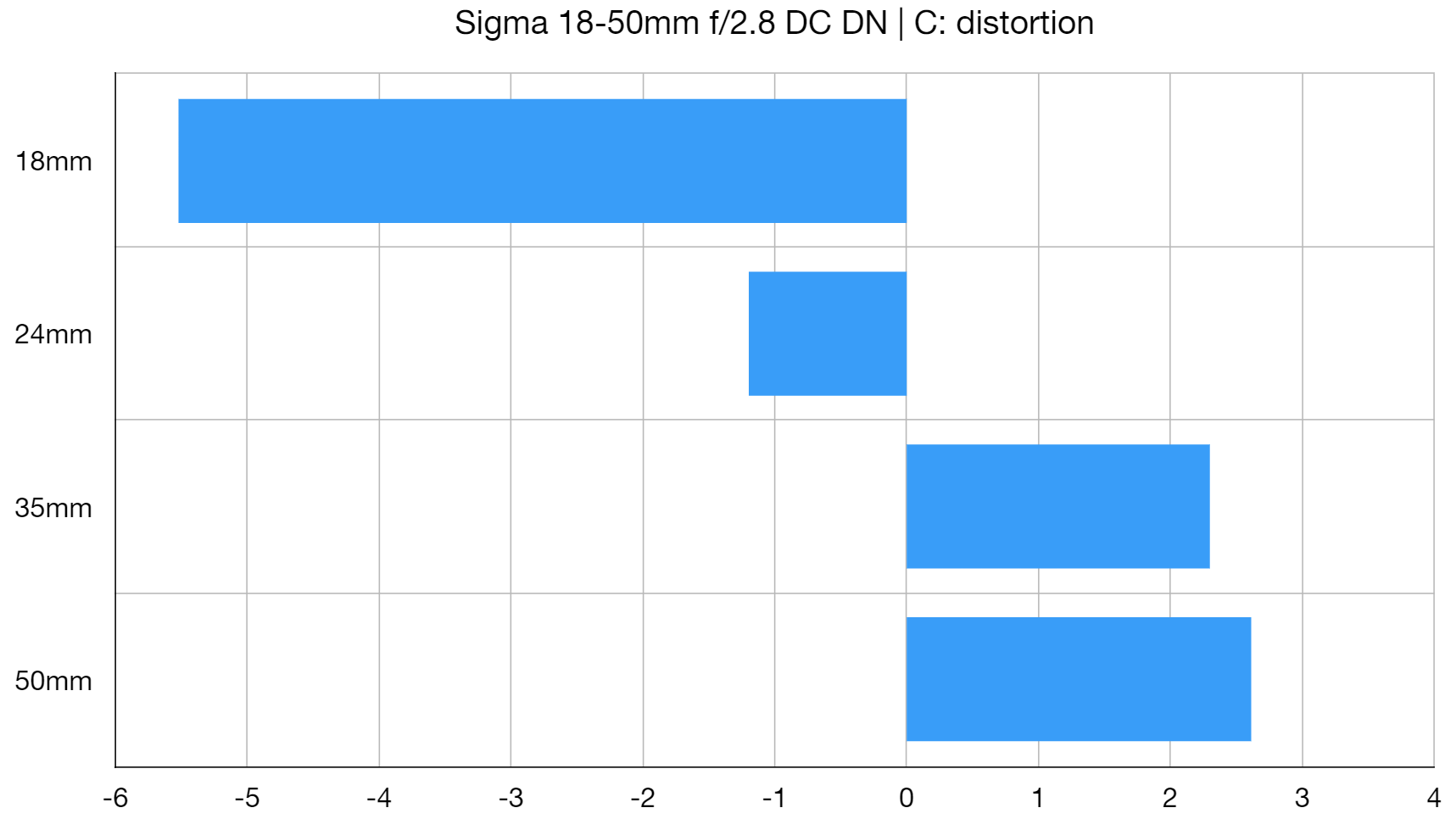
Barrel distortion is extreme at 18mm, quickly transitioning to moderate pincushion distortion at longer focal lengths. Thankfully in-camera auto distortion correction will compensate for this, and evidently the lens has been engineered to rely heavily on this firmware correction.
Sigma 18-50mm f/2.8 DC DN | C: Verdict
Sigma's debut on the Canon RF mount is a triumph. Super light yet super fast, pint-sized yet power-packed, I keep coming back to the same key selling point: this is a standard trinity lens that fits in your pocket. What's not to love about it?
Well, maybe a couple of things. It suffers the same minor optical quibbles as the earlier E-mount version, but again – in my day-to-day shooting, I didn't find these to be at all an issue. It would also have been cool, given how many of Canon's APS-C bodies lack image stabilization, if this lens was stabilized.
Still, this lens delivers everything I could have hoped for – and if you're shooting on one of Canon's RF-S cameras, this is probably the most essential lens out there right now.
Good work, Sigma. Now, about those full-frame RF lenses…
| Features | A constant f/2.8 aperture and weather sealing – but no stabilization, switches or buttons. | ★★★★ |
| Design | Small, sleek and supremely lightweight – perfect for smaller bodies. | ★★★★★ |
| Performance | Some optical foibles aside, this is a fast aperture, fast focusing lens with great IQ. | ★★★★ |
| Value | A standard trinity lens for under 500 bucks? This is great value! | ★★★★★ |
Should you buy the Sigma 18-50mm f/2.8 DC DN | C?
✅ Buy this...
- If you're an APS-C Canon RF owner
- You need a weather-sealed lens
- You want an all-purpose powerhouse
🚫 Don't buy this...
- If you want image stabilization
- You're a stickler for corner sharpness
- You hate in-camera correction
Sigma 18-50mm f/2.8 DC DN | C: Alternatives
The Canon RF-S 18-45mm f/4.5-6.3 IS STM offers a very similar focal length in a much smaller, cheaper package that also has image stabilization. However, the aperture is slower and variable and there is no weather sealing.
While it's a full frame lens, the Canon RF 24-50mm f/4.5-6.3 IS STM will mount on an APS-C camera and again provides a similar focal length. It has all the same pluses and minuses as the RF-S 18-45mm, except that it is physically bigger.

James has 22 years experience as a journalist, serving as editor of Digital Camera World for 6 of them. He started working in the photography industry in 2014, product testing and shooting ad campaigns for Olympus, as well as clients like Aston Martin Racing, Elinchrom and L'Oréal. An Olympus / OM System, Canon and Hasselblad shooter, he has a wealth of knowledge on cameras of all makes – and he loves instant cameras, too.




